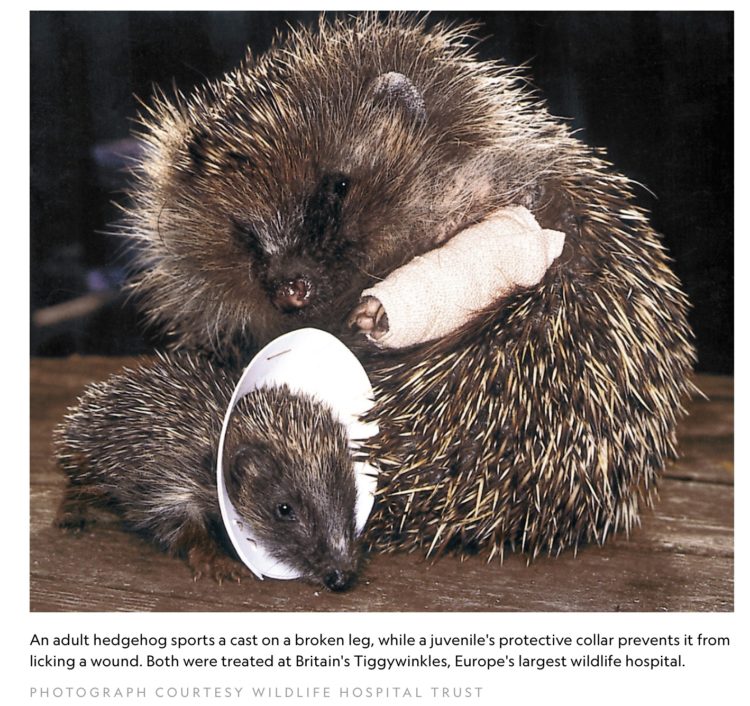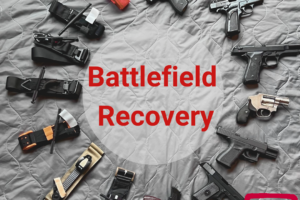
Always Learning: Basic Wild Hedgehog First Aid
- Posted by Mike Shertz MD/18D
- Categories More
🕖 Reading Time, 5 minutes
As a professional instructor, it is important to keep learning and improving your knowledge base. As an SF soldier, having some familiarity with any topic is beneficial because you never know what will come in handy in an Unconventional Warfare setting. Based on this life experience, when Facebook advertised an online class on Hedgehog First Aid, it seemed obvious I had to take it. 
My prior experience with tiny mammals is pretty limited, though I did once perform a surgical airway and place bilateral chest tubes in a dead rat before dissecting it in biology class. I occasionally saw hedgehogs along trails I ran while in medical school in New York. I realize now from Emma See Less’s class that hedgehogs are nocturnal and “if you see them during the day, they are not ok.”
Apparently, the biggest immediate life threats to injured hedgehogs are hypothermia and dehydration. In keeping with TCCC / TECC guidelines, hypothermia management is crucial. Hot packs or heating pads are recommended, but much like a NAR HPMK, don’t place the heating source directly on the casualty’s skin or you can burn them.
Contain an injured hedgehog in a box or small pet carrier. Placing a white fleece blanket between the heat source and the hedgehog helps evaluate them for injury. Blood is obviously very visible on white as is their stool, which if green indicates parasitic infection. Fleece is used because traditional towels can fray and loose threads can strangle hedgehog babies. As always, the first rule in medicine is don’t make things worse.
If severely dehydrated, they may require subcutaneous IV fluid, but many can be orally rehydrated using Critical Care Formula, a glucose-protein blend added to water. Giving solid food to a dehydrated hedgehog can cause organ failure.
Another big problem for hedgehogs once injured, is fly larva. Flies will deposit their eggs on hedgehogs, including the mouth of babies. Once you warm up the “hedgie” (Emma is British), the fly larva hatch into maggots. So, part of hypothermia management is fly larva removal. Certain insecticides can be used, but manual removal with hemostats seems best.
When feeling threatened, hedgehogs roll into a tight ball, so all their quills to point out. Their quills don’t detach like porcupines, but handling them with gloves is recommended both for hygiene and safety. You can “uncurl” them for physical examination by “rocking them back and forth” from one hand to another. Doing this makes them stick their feet out for stability.
Ultimately, an injured or sick hedgehog will need rehabilitation at a center with experience caring for them. Many can be successfully reintroduced back into the wild.
As a general matter, we know online education can be pretty hit-or-miss on the quality. In a 1.5 hour class, Emma provided a comprehensive introduction to hedgehog first aid, with clear instructions for directly actionable skills. You can find her on at Little Silver Hedgehog.
If you don’t have hedgehogs in your area, but want to spend some time getting Tactical Casualty Care training for humans instead, you can always head over to our website, crisis-medicine.com for professionally filmed & edited, tactically-relevant and science-based casualty care courses.
Preview CourseNot sure? Try a preview TRAIN NOWOnline Tactical Casualty Care Classes
Photo Credits:
Injured Hedgehogs at Britian’s Tiggywinles, National Geographic
Hedgehog Facebook Class and Hedgehog in Spring Garden, Little Silver Hedgehog
Dr. Mike Shertz is the Owner and Lead Instructor at Crisis Medicine. Dr. Shertz is a dual-boarded Emergency Medicine and EMS physician, having spent over 30 years gaining the experience and insight to create and provide his comprehensive, science-informed, training to better prepare everyday citizens, law enforcement, EMS, and the military to manage casualties and wounded in high-risk environments. Drawing on his prior experience as an Army Special Forces medic (18D), two decades as an armed, embedded tactical medic on a regional SWAT team, and as a Fire Service and EMS medical director.
Using a combination of current and historical events, Dr. Shertz’s lectures include relevant, illustrative photos, as well as hands-on demonstrations to demystify the how, why, when to use each emergency medical procedure you need to become a Force Multiplier for Good.



